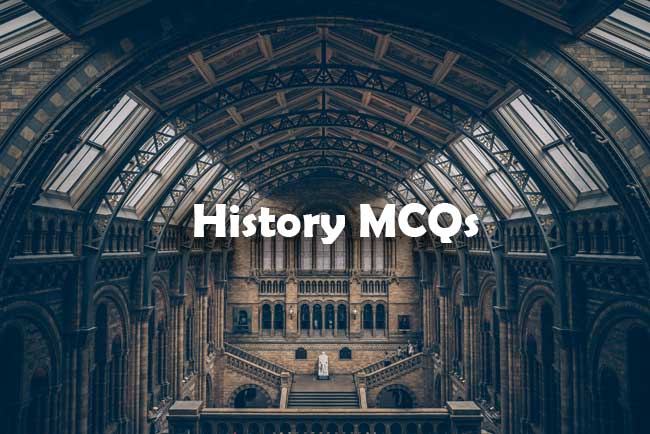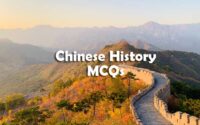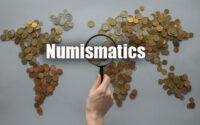MPPSC History Questions
Find the direct download link for MPPSC History Questions paper pdf in the section below. Aspirants who are looking for MPPSC History General Knowledge Papers can find in the table below. Are you searching for the Madhya Pradesh Public Service Commission History Sample Papers for starting exam preparation?

Don’t worry. We attached the free downloading links of Madhya Pradesh Public Service Commission History General Knowledge Old Papers. By referring the Last 5 years Madhya Pradesh Public Service Commission History Previous Question Papers, candidates can analyse the exam pattern.
MPPSC History Questions Papers will help you to get a good score in the exam. By clicking on the below-enclosed links, you can download the MPPSC History Questions Papers with solutions in the form of Pdf.
History Questions for MPPSC
1. The name of the poet Kalidas is mentioned in the :
(A) Allahabad Pillar Inscription
(B) Aihole Inscription
(C) Alapadu Grant
(D) Hanumankonda Inscription
2. Who was the author of the Allahabad Pillar Inscription of Samudragupta ?
(A) Kumaravallabha
(B) Harishena
(C) Devi Gupta
(D) Hariputhra
3. Which among the following was an administrative unit under the Imperial Guptas ?
(A) Bhukti
(B) Mandala
(C) Rajya
(D) Sima
4. Identify the incorrect pair amongst the following :
(A) Hemchandra–Parishishtaparvan
(B) Vi shakhadat ta–Mudrarakshash
(C) Ptolemy–The Peloponnesian war
(D) Megasthenes–Indica
5. The commentator of the Ninth Century A.D. Medhatithi has written his commentary on which famous text ?
(A) Brahmasutra
(B) Ashtadhyayi
(C) Manusmriti
(D) Nitisara
6. Foreign Notices of South India” was written by :
(A) K.M. Panikkar
(B) K.A. Nilakantha Shastri
(C) K.K. Pillai
(D) N. Subramaniam
7. Which one of the following pairs of Kings and the works authored by them is correctly matched ?
(A) Krishnadevaraya–Samaranganasutradharma
(B) Mahendravarman–Mat tavilasaprahasana
(C) Bhajadeva–Manasollasa
(D) Somesvara–Amuktamalyada
8. According to Ziauddin Barani, where were Alauddin Khilji’s market regulations actually effective ?
(A) From Multan to Allahabad
(B) From Multan to Lahore
(C) From Lahore to Agra
(D) From Allahabad to Lakhnauti
9. Firoz Shah Tughlaq may have brought about the decline of the Delhi Sultanate because he :
(A) Conducted a large number of military campaigns
(B) Provoked peasant rebellions by his oppression
(C) Spent too much money on canals
(D) Allowed the nobility to become a hereditary nobility
10. In the Telugu text of Krishnadevaraya’s time, the Rayavachakamu, who was the Narapati ?
(A) The Vijayanagar King
(B) The Orissa King
(C) The Bijapur King
(D) The Golconda King
11. Where in the Deccan is the tomb of the Sufi Saint Gesudaraz ?
(A) Bidar
(B) Berar
(C) Khuldabad
(D) Gulbarga
12. Malik Amber is credited with having replaced ………………. .
(A) The Zabti system with the Ijara system
(B) The Ijara system with the Zabti system
(C) Afaqi revenue collectors with Deccani revenue collectors
(D) Deccani nobility with Afaqi nobility
13. To which ruler of the Deccan did Akbar write a letter in 1591 ?
(A) Burhan Nizam Shah of Ahmadnagar
(B) Chand Bibi of Ahmadnagar
(C) Raja Ali Khan of Khandesh
(D) Ibrahim Adil Shah of Bijapur
14. Which is regarded as the largest naval expedition in the Arabian Sea in Medieval times ?
(A) The Turkish fleet sent to besiege Diu in 1534
(B) The Portuguese fleet that blockaded Chaul in 1515
(C) The Portuguese fleet that attacked Ormuz in the 1520’s
(D) The Turkish fleet that attacked Basra in 1512
15. In the middle of the 17th Century who led the Mughal forces into the Brahmaputra Valley ?
(A) Asad Khan
(B) Mir Jumla
(C) Daud Khan Panni
(D) Zulfiqar Khan
16. Who was the Amil in Mughal Administrator ?
(A) The Revenue Assessor
(B) The person in-charge of Revenue disputes
(C) The person in-charge of collection of Customs Duties
(D) The Revenue Collector
17. Altamgha grants were …………… .
(A) Grants of land to retired officers as pension
(B) Grants of land revenue for educational purposes
(C) Grants of land for cultivation
(D) Cash grants to purchase seeds and implements
18. Under the Mughals, into how many categories was land divided ?
(A) Two
(B) Three
(C) Four
(D) Five
19. The Viceroyalty of the four provinces of the Deccan was termed ……………. in Mughal times.
(A) Riyasat
(B) Risalat
(C) Ayalat
(D) Buyutat
20. Where was Mumtaz Mahal buried until the Taj Mahal was built ?
(A) Aurangabad
(B) Surat
(C) Kandahar
(D) Burhanpur
|
More History Questions for Preparation
|
|
| UPSC | TNPSC |
| GPSC | WBCS |
| NDA | SSC CHSL |
| DSSB | SSC CGL |
| AFCAT | MTS |
| RRB NTPC | MPSC |
| MPPSC | CDS |
| BPSC | |
21. What was the basis for the Dahsala system ?
(A) Assessment after appraisal
(B) Assessment on the basis of crop sharing
(C) Arbitrary assessment
(D) Assessment after measurement
22. An early biography of Chhatrapati Shivaji Maharaj was written by :
(A) Dr. Dellon
(B) Dr. John Fryer
(C) Cosmo de Guarda
(D) Niccolo Manucci
23. In which Bakhar do we get a description of the Maratha Navy ?
(A) Chitnis Bakhar
(B) Tanjore Bakhar
(C) Chitragupta Bakhar
(D) Sabhasad Bakhar
24. Signed between Peshwa Baji Rao II and the Marquis of Wellesley in 1802, gave the British effective control over the Deccan and Western India :
(A) The treaty of Bassein
(B) The treaty of Purandar
(C) The treaty of Surat
(D) The treaty of Khandesh
25. The Charter Act of ………………… ended the East India Company’s monopoly of trade with India.
(A) 1813
(B) 1806
(C) 1833
(D) 1853
26. The Young Bengal Movement was led by ……………….. advocated that Indian society and religion should be judged by the dictates of European rationalism’.
(A) Radha Kant Deb
(B) Akshay Kumar Dutt
(C) Henry Derozio
(D) William Jones
27. Who enunciated ‘Paramountcy’ as a concept in 1820, which implied the duty of British as “Supreme guardians of general tranquillity, law and right to maintain the legal succession” in the princely states ?
(A) Lord Cornwallis
(B) Charles Metcalfe
(C) John Malcolm
(D) Lord Dalhousie
28. Swami Dayanand Saraswati founded the Arya Samaj (1875) in :
(A) Surat
(B) Amritsar
(C) Ambala
(D) Bombay
29. Poona Sarvajanic Sabha was reorganised form of the :
(A) Poona Association
(B) Poona Sabha
(C) Poona Mandal
(D) Vichar Munch
30. The patriotic song ‘Bande Mataram’ was written by :
(A) Devendranath Tagore
(B) Bankim Chandra Chatterji
(C) Keshav Chandra Sen
(D) Rabindranath Tagore
31. The transfer of the capital from Calcutta to Delhi took place in the year :
(A) 1911
(B) 1877
(C) 1930
(D) 1942
32. “Al Hilal”, a weekly Urdu Newspaper, was founded by :
(A) Syed Ahmed Khan
(B) Dr. M.A. Ansari
(C) Khan Abdul Gaffar Khan
(D) Maulana Abul Kalam Azad
33. At which session of the Congress was the Congress-League Pact signed in December, 1916 ?
(A) Faizpur
(B) Amritsar
(C) Bombay
(D) Lucknow
34. O’ Dwyer was killed by :
(A) Madanlal Dhingra
(B) Sardar Udham Singh
(C) Anant Laxman Kanhere
(D) Khudiram Bose
35. Harish Chandra Bharatendu was a prolific writer of prose and poetry who made pioneering contribution to :
(A) Bengali Literature
(B) Hindi Literature
(C) Assamese Literature
(D) Gujarati Literature
36. Who was known as the “Frontier Gandhi” ?
(A) Syed Ahmed Khan
(B) Khan Abdul Gaffar Khan
(C) Omar Sohani
(D) Hasrat Mohani
37. ……………… handed over command of the National Army (INA) to Subhash Chandra Bose in 1943.
(A) Surendra Nath Banerjee
(B) Chittaranjan Das
(C) Rasbehari Bose
(D) Jagdish Chandra Bose
38. Formation of the interim government took place on :
(A) 16th August, 1946
(B) 20th August, 1941
(C) 2nd September, 1946
(D) 5th September, 1946
39. Which Harappan site is known for furrow marks ?
(A) Harappa
(B) Rangapur
(C) Lothal
(D) Kalibangan
40. Kayatha culture is associated with which of the following ?
(A) Palaeolithic
(B) Mesolithic
(C) Megalithic
(D) Chalcolithic
| Ancient India | Modern India |
| Medieval India | World History |
41. From which archaeological site iron furnace was found ?
(A) Naikund
(B) Mahurjhari
(C) Pauni
(D) Nevasa
42. Manshehara and Shahabajgadhi inscriptions are written in :
(A) Brahmi script
(B) Devanagari
(C) Kharoshti
(D) Aramaic
43. ‘Pratishthana,’ an important trading centre was on the bank of river ………………………… .
(A) Wainganga
(B) Krishna
(C) Godavari
(D) Narmada
44. Gold coins of Gupta dynasty were known as :
(A) Rupaka
(B) Satamana
(C) Karshapana
(D) Dinar
45. The author of ‘Amarkosha’ was Amarsimha, who was in the court of :
(A) Chandragupta I
(B) Samudragupta
(C) Chandragupta II
(D) Vashishthiputra Pulumavi
46. Pune copper plates are associated with :
(A) Pravarsen II
(B) Rudrasen II
(C) Prabhavati Gupta
(D) Harisen
47. Hiuen Tsang observed that Jainism was flourishing in :
(A) Bengal
(B) Bihar
(C) Uttar Pradesh
(D) Orissa
48. The freeze depicting the ‘descent of the Ganga’ carved on two huge rocks is located in :
(A) Pattadakal
(B) Aihole
(C) Mahabalipuram
(D) Hampi
49. Sittal-Nivasal cave temple paintings from Pudukottai were made during which Pallava king ?
(A) Narasimhavarman I
(B) Mahendravarman
(C) Nandivarman II
(D) Parmeshwarvarman
50. Which Chola king married his daughter with a Sinhalese prince ?
(A) Kulotung I
(B) Rajraj I
(C) Rajendra II
(D) Parantak I



